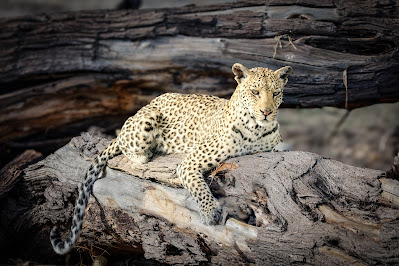Botswana has long been my bucket-list destination for me for a long time . I recently had the privilege of embarking on an unforgettable safari adventure curated by Natural Habitat Adventures, exploring some of the most iconic landscapes across Zambia, Zimbabwe, and Botswana. The journey was nothing short of spectacular, and I’m excited to share the highlights of this incredible trip!
Starting with the Mighty Zambezi in Zambia
Our adventure began on the tranquil yet powerful waters of the Zambezi River. A boat cruise offered us a serene introduction to the region’s natural beauty, as we glided past lush riverbanks teeming with birdlife. The experience felt surreal—there’s something special about witnessing the sunset on the Zambezi, with hippos bobbing in the water and the distant roars of elephants echoing across the river.
Next, we ventured into Mosi-oa-Tunya National Park, a treasure trove of biodiversity. Here, we had our first wildlife sightings, Elephants, White Rhinos etc. setting the tone for the rest of our journey. The park’s name, meaning “The Smoke That Thunders,” is a nod to the nearby Victoria Falls, one of the true wonders of the world.
The Majestic Victoria Falls in Zimbabwe
Crossing into Zimbabwe, we headed straight to see the mighty Victoria Falls. Words can barely capture the sheer power and grandeur of this natural wonder. The thunderous roar of the cascading water, the mist rising like smoke into the sky, and the rainbows forming in the spray—it was a sensory overload in the best possible way. I’ve seen countless photos of Victoria Falls, but being there in person is an experience like no other.
Into the Wild: Chobe River Safari in Botswana
Our journey then took us into Botswana, where we embarked on a boat safari along the Chobe River in Chobe National Park. This part of the trip was all about the incredible diversity of wildlife. The riverbanks were alive with activity—elephants bathing in the water, buffalo herds grazing, and a variety of bird species flitting about. It was a perfect setting to witness the raw beauty of the African wilderness.
Discovering Linyanti: Wild Dogs and Elephants Galore
The next stop was the Linyanti private concession, an area known for its prolific wildlife. We were welcomed by sightings of wild dogs, one of Africa’s most elusive and endangered predators. The thrill of watching a pack of wild dogs in action is unmatched—they move with such coordination and speed, it’s like watching a choreographed performance. We also encountered large herds of buffalo and elephants, creating unforgettable memories of this untamed landscape.
Okavango Delta: Jao Concession’s Leopard Drama
No visit to Botswana would be complete without exploring the Okavango Delta, and the Jao Concession was the perfect place to do just that. This vast, watery paradise offered us a different perspective on the African safari. The highlight here was a dramatic encounter between a leopard and a pack of wild dogs—a thrilling chase that ended with the leopard retreating up a tree. It’s moments like these that make the Okavango Delta so special; you never know what incredible wildlife drama will unfold.
Our time in the delta was capped off with a breathtaking helicopter ride. Seeing the Okavango Delta from above, with its maze of channels and lagoons, was an absolute must-do experience. The bird’s-eye view gave us a true appreciation of the scale and beauty of this UNESCO World Heritage Site.
A Perfect Ending in Santawani Concession
For the final leg of our journey, we flew across the delta to the Santawani concession. This area offered yet another distinct landscape, with dense woodlands and open plains providing the backdrop for our last game drives. We enjoyed more fantastic wildlife sightings, including elephants and big cats, wrapping up our safari adventure on a high note.
Reflections on a Trip of a Lifetime
As I head home with a heart full of memories and a camera filled with photos, I’m already dreaming of a return trip. Botswana has a way of getting under your skin, its wild beauty and incredible wildlife encounters leaving a lasting impression. From the mighty Zambezi River to the expansive Okavango Delta, every moment of this journey was unforgettable. If you’re looking for a safari experience that combines seclusion, breathtaking landscapes, and unparalleled wildlife viewing, Botswana should be at the top of your list.
I can’t wait to go back and experience it all over again.
TSAMAYA SENTLE!
SAFARI PHOTOS GALLERY












































